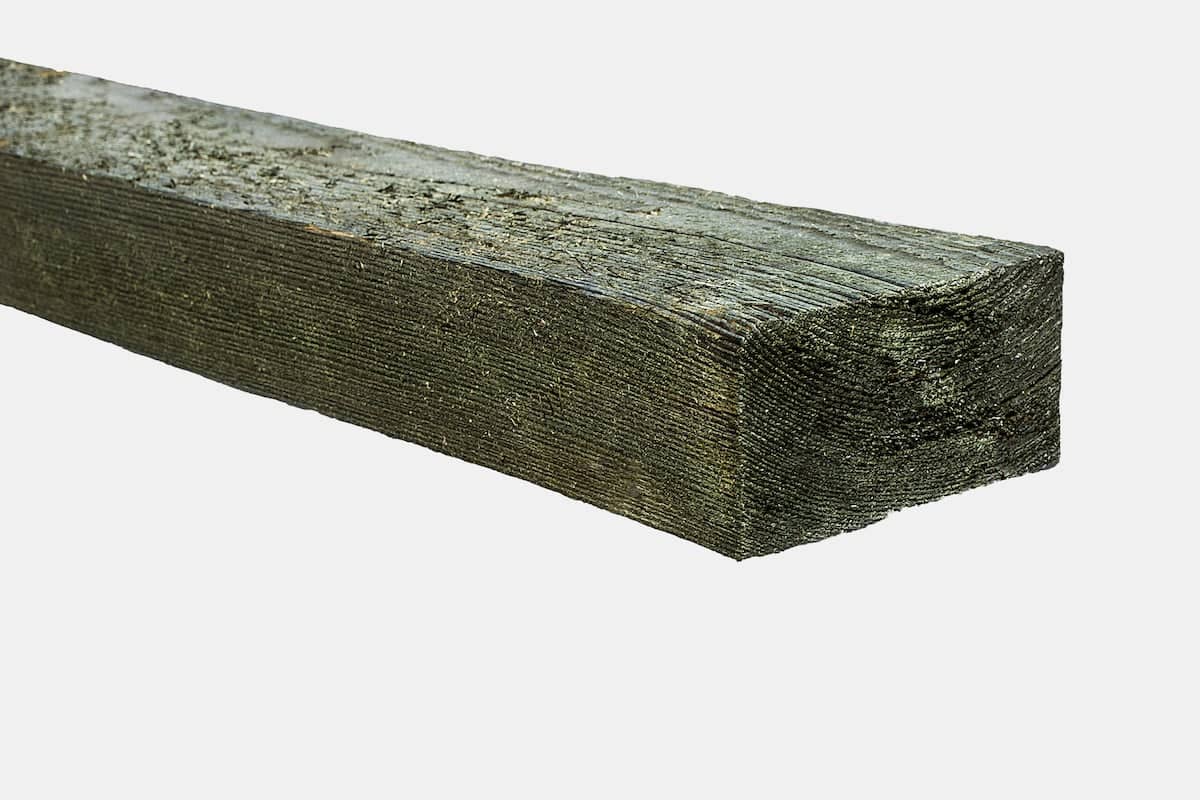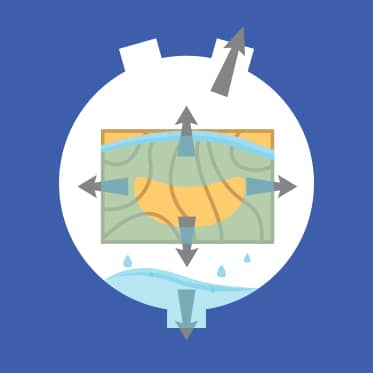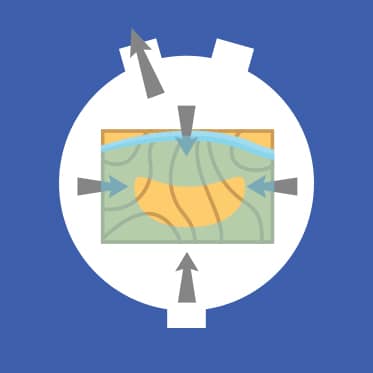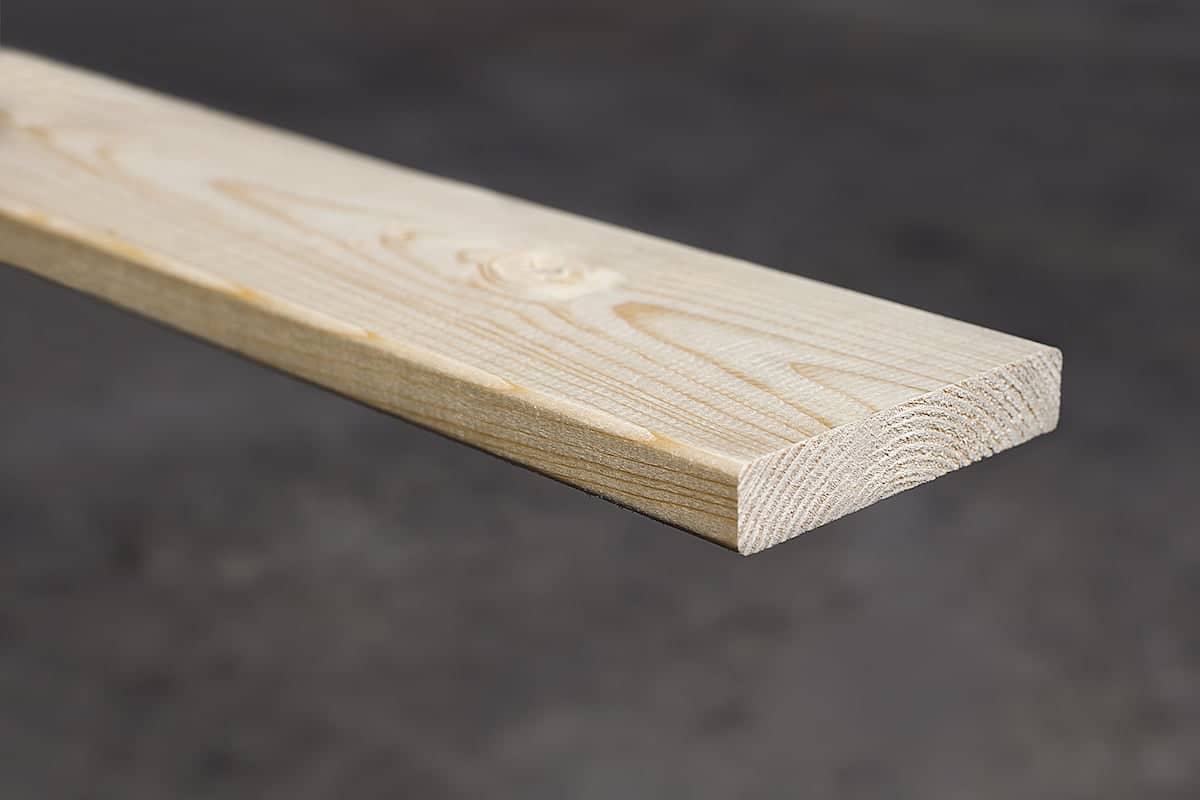Pressure impregnated timber – Pressure treatment
Terraces, fences, playgrounds, ladders, wooden tables and chairs, claddings, tiling and other timber products are used for our needs and to create beautiful surroundings. Timber products are valued, it is desired to preserve them and to keep them in a best possible condition, but due to weather conditions and due to contact with the ground these wishes are often not meant to come true.
However, there is a certain way, which will ensure the longevity of timber products. If You want long serving timber products you need pressure impregnated timber.
Timber can be impregnated easily at home, but the impregnation liquid will not penetrate through the entire timber. In order for timber to have very high resistance to humidity, fungi, sunlight, rot and termites, timber impregnated by pressure treatment should be bought.
Pressure treatment is carried out with Tanalith E preservative, which contains copper and organic biocides. This impregnator is applied in highpressure industrial process, in which timber gains natural light green tint. Over time the timber changes color and becomes honey-brown color, until finally it becomes naturally grayish in color.
Tanalith E ensures, that timber acquires high resistance to humidity, sunlight, rot and bacteria. This preservative is used worldwide for about 20 years, so it has proved its effectiveness, longevity and benefits. It is important to mention that described preservative complies with EU directive no. 2006/139/EC. This means that it does not contain any forbidden compounds (of chromium, copper, arsenic), and that it meets the environmental and health requirements.
So, if You are considering wooden fence, terrace, playground or other wooden object installation in the open air, it would be best to use pressure treated timber. Timber impregnated by pressure treatment will ensure You the quality and You will be guaranteed, that You will be able to enjoy Your constructed wooden product for many years.
PRESSURE TREATMENT PROCESS:


1.Timber is placed in a chamber and all the air is pumped out. This vacuum draws water out of the timber cells.

2.Chamber is flooded with solution of Tanalith E.

3.Pressure is applied to force solution into timber.

4.Excess solution is pumped out of chamber. Wood is kept under low pressure in a vacuum.

5.When chamber is opened to atmospheric pressure, the final surface layer of Tanalith E is forced into the wood.Impregnated wood is kept stored until fully dried.
IMPREGNATED TIMBER USE:
CONSTRUCTION. Wooden parts of the foundation, floor support beams, floors, wall frames, beams, roof beams and boards, timber used in house exterior, claddings, wooden tiles, other timber used in commercial and private buildings.
VILLAS AND COUNTRY HOUSES. Terraces, fences for flowers, playgrounds, ladders, fences for lawn edges, fences, benches and picnic tables, signs, boxes and so on.
AGRICULTURE. Tree supports, grape trellis. Poles, fences, etc. Round, square planed or square fence poles, gates and gate posts, fencing timber.
TRANSPORTATION. Timber for ship construction, flooring and other transportation timber, supports and floors of containers, packaging, cable reels and their covers.
ENGINEERING. Electric poles, platforms, bridges and bridge pavements, cable supports, sound fencers/barriers.
Pressure treatment process
| 1. Timber is placed in a chamber and all the air is pumped out. This vacuum draws water out of the timber cells. |
| 2. Chamber is flooded with solution of Tanalith E. |
| 3. Pressure is applied to force solution into timber. |
| 4. Excess solution is pumped out of chamber. Wood is kept under low pressure in a vacuum. |
| 5. When chamber is opened to atmospheric pressure, the final surface layer of Tanalith E is forced into the wood.Impregnated wood is kept stored until fully dried |


